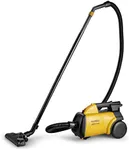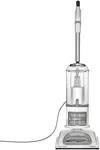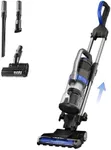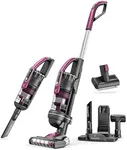Buying Guide for the Best Corded Vacuums
When it comes to choosing a corded vacuum, it's important to consider your specific cleaning needs and preferences. Corded vacuums are known for their consistent power and ability to handle large cleaning tasks without the need for recharging. To find the best fit for you, you'll need to look at several key specifications and understand how they impact the vacuum's performance and usability. Here are the main specs to consider and how to navigate them.Suction PowerSuction power is a measure of how effectively a vacuum can pick up dirt and debris. This is important because higher suction power means better cleaning performance, especially on carpets and rugs. Suction power is often measured in watts or air watts. For light cleaning tasks or hard floors, lower suction power (around 100-200 air watts) may be sufficient. For homes with pets, thick carpets, or heavy dirt, higher suction power (200+ air watts) is recommended. Consider your cleaning environment and choose a vacuum with appropriate suction power to ensure efficient cleaning.
Filtration SystemThe filtration system in a vacuum determines how well it can trap dust, allergens, and other particles. This is crucial for maintaining indoor air quality, especially for allergy sufferers. HEPA (High-Efficiency Particulate Air) filters are the gold standard, capturing 99.97% of particles as small as 0.3 microns. If you have allergies or asthma, look for a vacuum with a HEPA filter. For general use, a standard filter may suffice, but ensure it is easy to clean or replace to maintain performance.
Weight and ManeuverabilityThe weight and maneuverability of a vacuum affect how easy it is to use, especially if you have a multi-story home or need to clean tight spaces. Lightweight vacuums (under 10 pounds) are easier to carry and maneuver, making them ideal for quick cleanups and small spaces. Heavier models (over 15 pounds) may offer more power and larger dust capacities but can be cumbersome to move around. Consider your physical capabilities and the layout of your home when choosing the right weight and maneuverability for your needs.
Dust CapacityDust capacity refers to the amount of dirt and debris a vacuum can hold before it needs to be emptied. This is important for convenience and efficiency, as larger capacities mean less frequent emptying. Dust capacities can range from less than 1 liter to over 3 liters. For small apartments or occasional use, a smaller capacity may be sufficient. For larger homes or frequent cleaning, a larger capacity will save you time and effort. Think about how often you clean and how much dirt you typically collect to choose the right dust capacity.
Cord LengthCord length determines how far you can move the vacuum from the power outlet without needing to switch plugs. This is important for convenience and efficiency, especially in larger homes. Cord lengths typically range from 15 to 30 feet. For small rooms or apartments, a shorter cord may be adequate. For larger spaces or homes with fewer outlets, a longer cord will allow you to clean more area without interruption. Consider the size of your cleaning area and the availability of power outlets when choosing the appropriate cord length.
Attachments and AccessoriesAttachments and accessories enhance the versatility of a vacuum, allowing you to clean different surfaces and hard-to-reach areas. Common attachments include crevice tools, dusting brushes, and upholstery tools. These are important for cleaning furniture, stairs, and tight spaces. If you have specific cleaning needs, such as pet hair removal or delicate surfaces, look for vacuums with specialized attachments. Assess your cleaning tasks and choose a vacuum with the right set of accessories to make your cleaning more effective and efficient.






















